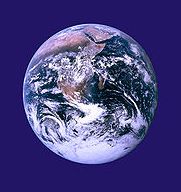Saturday
Featured StoriesContemplating Action on Climate Change, Part I
Calling for Meditation in Action on Climate Change –A Further Exploration
by Acharya Marty Janowitz
Part One
 A year ago many of us were looking forward to the People’s Climate Mobilisation which was timed to coincide with the United Nations Summit on Climate Change. While the New York and global outpouring was monumental, bringing unprecedented attention and hope to the imperative of climate change action, it was also fleeting. In the year since there have been efforts and steps forward on both the most local and international levels although the elements underlying the crisis are little changed. Now, we are on the cusp of the December Paris Climate Conference, at another point where hope meets fear.
A year ago many of us were looking forward to the People’s Climate Mobilisation which was timed to coincide with the United Nations Summit on Climate Change. While the New York and global outpouring was monumental, bringing unprecedented attention and hope to the imperative of climate change action, it was also fleeting. In the year since there have been efforts and steps forward on both the most local and international levels although the elements underlying the crisis are little changed. Now, we are on the cusp of the December Paris Climate Conference, at another point where hope meets fear.
Despite the compelling arguments for immediate and deep-seated change there are many obstacles, as dynamic political, social, economic, natural and emotional forces converge around the process. On the one hand we have endured another cycle of painstaking negotiations, forestalling and posturing – in other words, another manifestation of the three poisons of passion/attachment, ignorance and aggression. On the other hand we have been buoyed by Laudito Si’/Praised Be, On Care for our Common Home, Pope Francis’ eloquent imploration for humanity to embody environmental wisdom within a broader commitment to social and spiritual transformation. The Pope’s plea is only the most prominent within a chorus of passionate and compassionate discourses on the spiritual and moral dimensions of the climate crisis.
Faith communities of every tradition are bringing an urgent and ever more powerful message to the deliberations, articulating a personal and collective sense of love and responsibility for the well-being of global humanity and of nature itself. Beyond just an environmental emergency we understand that this is also an impending humanitarian and social tragedy that is already affecting some of the globe’s most vulnerable communities. And we know that in its essence this is also a crisis of the spirit stemming from our loss of connection with the sacred nature and basic goodness of both our world and our own nature. This is why, as people with a strong spiritual orientation, we understand that climate change is a spiritual and moral issue.
This is unfolding at a moment when our spiritual and temporal values as Buddhists are being sorely challenged as we grapple with being meditators, practitioners and citizens amidst a host of daunting situations from the horrific (sectarian warfare and unconstrained violence of many types) to the ridiculous (the chauvinistic, egoist Trump phenomenon). It is enough to make many, including me, simultaneously very sad and angry. And of course this has drawn many of us into a degree of civic activism we might at one time have thought too much of the world of affairs, as we join with the vigorous and sometime militant campaigners who are pushing back against these dark forces. Figuring out how to be involved in this, in what we have been called to do, is a formidable task. I realize that it’s not so much that we are simply trying to meditate our way out of the problem — even though many of us have tried and keep trying. It is hard to be a meditator, and perhaps even harder to be an activist. Rather, the dharmic teachings are talking about working with the fabric and nature of reality, and about creating a paradigm shift within that by applying inner peace and bravery to develop outer compassionate action. This is particularly important since amidst such emotionally fraught debates it is easy to lose the personal tether to our humanity.
Controversial issues tend to breed divisiveness, ideological rigidity and a tendency to harden our hearts by objectifying those we disagree with as enemies. As a more senior student in the dharma, therefore, one of the reasons I am personally motivated to be active in this movement is my abiding conviction that violence and aggression such as has been perpetrated on our environment cannot successfully be countered with further aggression. As the voice of faith communities we must represent another way – one that simultaneously raises our concern and compassion, highlighting the genuinely human dimension of this predicament. As Buddhists our engagement not only adds impetus to the climate change movement, but can add a dharmic perspective that brings the root of underlying causes into visibility and awareness, a perspective that affects the course of advocacy. I’d like to explore this dimension further, acknowledging my lens as a practitioner shaped within the Kagyu and Nyingma lineages of Tibetan Buddhism and particularly within the Shambhala stream first articulated by my root guru Chögyam Trungpa Rinpoche and now transmitted by his lineage heir Sakyong Mipham Rinpoche.
 As suggested, the climate change movement has been a multi-decade roller coaster of hope and fear. As Buddhists, patterns of inflation and deflation, optimism and pessimism, hope and fear should not be a surprise. I daresay that at least some of the time all of us on the Noble Eightfold Path resist letting go of our projections. We struggle to find the way, caught between moments of openness and multi-moments of believing in and reinforcing the cocoons of our self-justifying beliefs. The same patterns manifest on the larger scales of community and society. Moments of aspiration, optimism and even conviction regarding the potential of realizing a truly decent future contrast with periods of deep consternation or even despair, in the face of sizable difficulties and negative attitudes dragging us down. Unless I/we can get beyond, or more likely work with, these extremes on both the personal and collective levels, I believe there is little opportunity to move a genuinely transformative path forward.
As suggested, the climate change movement has been a multi-decade roller coaster of hope and fear. As Buddhists, patterns of inflation and deflation, optimism and pessimism, hope and fear should not be a surprise. I daresay that at least some of the time all of us on the Noble Eightfold Path resist letting go of our projections. We struggle to find the way, caught between moments of openness and multi-moments of believing in and reinforcing the cocoons of our self-justifying beliefs. The same patterns manifest on the larger scales of community and society. Moments of aspiration, optimism and even conviction regarding the potential of realizing a truly decent future contrast with periods of deep consternation or even despair, in the face of sizable difficulties and negative attitudes dragging us down. Unless I/we can get beyond, or more likely work with, these extremes on both the personal and collective levels, I believe there is little opportunity to move a genuinely transformative path forward.
So how can we forge an authentic and workable path between our aspirations for change and the difficulties of doing so, a path between our faith in human goodness and our distress at the selfishness and parochialism that often seems to dominate social discourse? In my experience, the crux of our challenge is not to avoid these disconnections but to connect them, uniting our high aspirations with what we actually encounter on the ground, energizing the wisdom within both at the very point where they can join – at the heart of awareness. This is to recognize the relationship between our path as practitioners and our path as citizens and activists. In this we see that the paths of personal and social transformation are inextricably linked, recognizing that we cannot substantively work to alter the societal paradigm if we are not simultaneously working to alter our own.
Editor’s note: Look for Part Two in tomorrow’s edition of the Shambhala Times. In the meantime, you can see more on this topic from Acharya Janowitz, in this Shambhala Eco-Forum video.






Oct 25, 2015
Reply
Thanks Trudy for jumping in here and connecting. Your input would be so helpful, to this forum, of activists and thinkers.I attended a conference at Union Theological on Sept 15 which can be streamed , called Ethics, Environment and Economy. There is all kinds of cross pollination happening, which is very exciting.
I would love to connect with you around the work you do. My activity is mostly around interfaith climate work…
Maybe a skype, or a call sometime..
Oct 23, 2015
Reply
Just wanted to share the fact that my husband, David, and I participated in the Association of Contemplative Mind in Higher Education conference in D.C. Oct. 8-11. The theme was “Building Just Communities”. I was also a presenter of a 60 min. session on my work re: border crossing between government, universities, and indigenous communities, and part of a panel on Interpersonal mindfulness practice to work on issues of cultural understanding. That said, there were many amazing people working very directly and actively with social justice issues, and some excellent pedagogies shared throughout. Marty’s work is fantastic, so this is just an offering of a great field of ways people have successfully worked with some of the issues he has raised about our practice and engaging in social action.
Thank you for posting the article